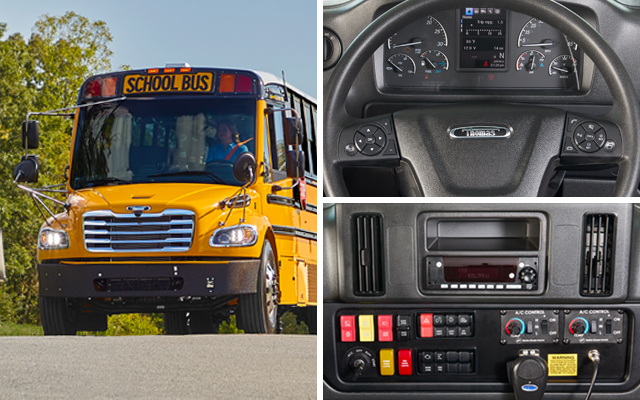
At Thomas Built Buses, we view safety as a journey, not a destination. Safety is at the core of everything we do—from our manufacturing processes to our testing protocols and focus on continuous innovation. It is more than just a feature; it’s an interconnected facet of all our operations.
Let’s look at how this commitment to safety is woven into every phase of our process, from…

What makes the electric Saf-T-Liner C2 Jouley school bus an excellent vehicle for today and the future? Our free Electric School Bus Curriculum answers this and more.
Today’s students are increasingly interested in electric vehicles and environmentally smart transportation options. This dynamic, professionally designed curriculum provides teachers with tools and lessons to increase…

In today’s rapidly evolving industrial landscape, sustainability has become a global focus. But what does that even mean? For Thomas Built Buses, it’s about defining our commitment to our organization, our industry and the communities we serve. While our electric school bus, the Saf-T-Liner® C2 Jouley®, and its many milestones (including the recent delivery of our 1,000th) often come to…

Upgrading the C2’s User-Experience for a New Era of Drivers
Student safety is in the hands of school bus drivers. The more comfortable and confident drivers feel, the more safely they drive.
For the last 20 years, Thomas Built Buses has supplied the industry with advanced electronics engineered with safety prioritized in every detail. Our Saf-T-Liner® C2 was designed…
Fact: Clean-diesel school buses are just as clean as, if not cleaner than, other fuel types based on EPA-regulated emissions, all while remaining powerful, reliable and highly efficient.
But just meeting standards isn’t good enough. You hear all the chatter about NOx levels and choosing a fuel type based on low NOx. The reality is that all fuel types (including gasoline and diesel) fall well below the EPA standard. But what about other emissions?
NOx contributes to smog and acid rain. On the other hand, CO2 levels, which contributes to global warming, are often ignored. Gasoline buses produce 66 percent more greenhouse gases compared to diesel, and 500,000 pounds of CO2 over the lifetime of the vehicle.

All engine manufacturers must share the EPA emissions ratings for their engines based on Federal Test Procedure (FTP) cycles. A deeper dive in the publicly shared emissions rating data reveals the true picture for all fuel types. While all fuels are clean, diesel comes out as the clear winner.
This is good news for school districts who are seeking cleaner fuels for their aging school bus fleet. Over the years, school bus engine manufacturers have been refining engine technology to meet increasingly lower EPA emissions standards. With new engine innovations and cleaner fuel overall, switching to buses with newer clean-diesel engines is now a better option for most fleets than switching to buses with gasoline or alternative-fuel engines.
“When you want to determine how green an engine is, the best way to gauge its cleanliness is by looking at the data. The proof is in the numbers” said Caley Edgerly, president and CEO of Thomas Built Buses, the leading manufacturer of school buses in North America. “But EPA ratings don’t tell the whole story. Carbon dioxide, a gas that is not regulated by the EPA is a greenhouse gas that contributes to global warming. If I want to leave the best planet possible for my grandchildren, I need to look beyond EPA ratings. Diesel is not only comparable to or cleaner than other fuels, it provides half of the CO2 emissions of gasoline. I choose diesel.”


